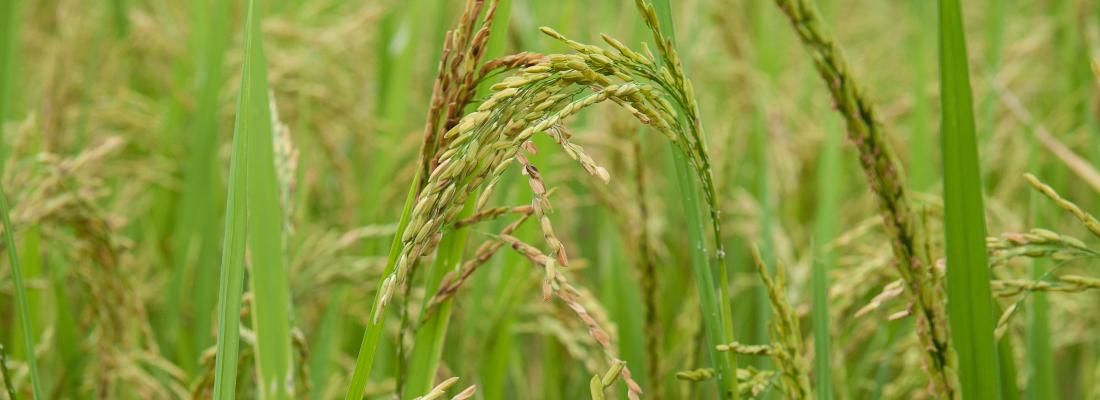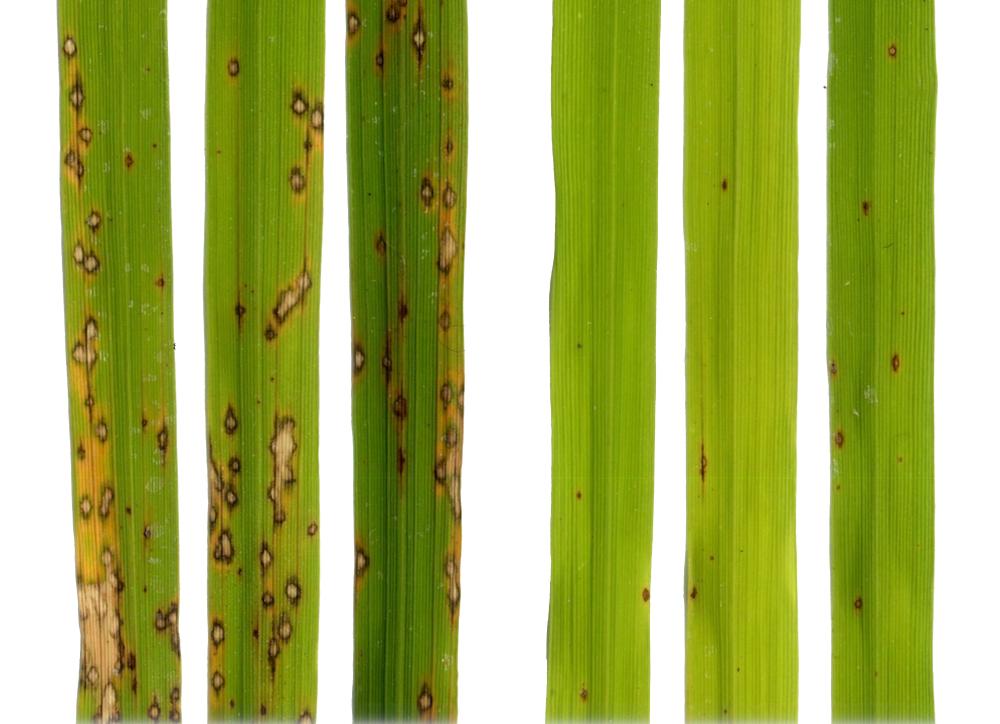Agroecology Reading time 3 min
Food security: discovery of a gene for immunity against a disease that ravages rice and wheat crops
Published on 04 June 2024

Blast disease, caused by the fungus Magnaporthe oryzae, is a veritable plague in agriculture. In addition to devastating rice crops – the staple food of 60% of the world’s population – it began attacking wheat in the 1980s, across a growing area of distribution and with a serious risk of emergence in Europe.
In this context, researchers from INRAE, CIRAD and the Université de Montpellier, together with scientists from China and the Philippines, analysed the molecular mechanisms behind a natural resistance to blast found in rice. They identified Ptr, a new type of disease resistance gene in plants. The presence of this Ptr gene makes rice immune to strains of M. oryzae that secrete AVR-Pita virulence factor, a protein that, in the absence of this gene, helps the pathogenic fungus invade the plant.
The majority of resistance genes in plants code for antenna-like receptors (proteins) that recognise chemical signals emitted by pathogens.
Ptr, however, codes for a new type of protein, not previously known to be active in plant immune systems. Scientists do not yet understand how this protein works. Unexpectedly, this research invalidates previous reference studies, published in 2000, that reported that another gene named Pi-ta and coding for a conventional type of immune receptor was responsible for AVR-Pita detection.
This work paves the way to the study of new resistance mechanisms in plants based on Ptr protein and other new components, with the aim of better understanding natural resistance to disease and using it more effectively for crop protection.

Reference
Xiao G., Laksanavilatn N., Cesari S. et al. (2024). The unconventional resistance protein PTR recognizes the Magnaporthe oryzae effector AVR-Pita in an allele-specific manner. Nature Plants. DOI : https://doi.org/10.1038/s41477-024-01694-z
